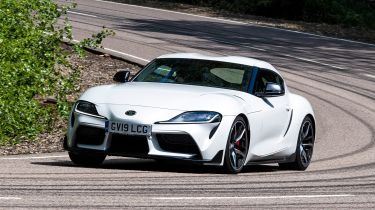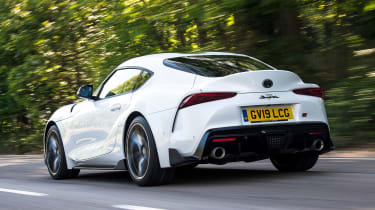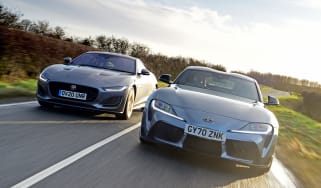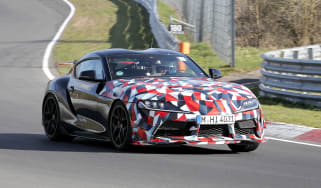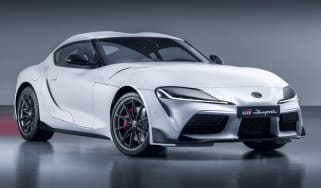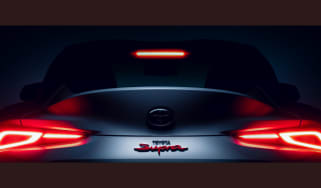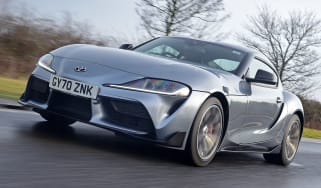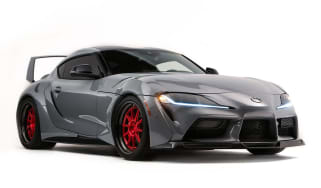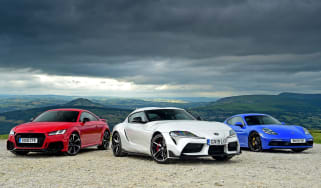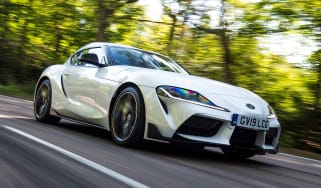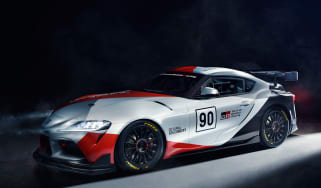Toyota Supra review
The Toyota Supra is a very capable sports car that uses shared BMW tech to its advantage
The Toyota Supra blends balance, agility, grip and poise with a punchy six-cylinder motor that delivers a hit of performance and (mostly) the stirring engine note we were after. Whether or not the Toyota collaboration with BMW that produced this Supra affects its authenticity, we’ll leave up to you. But there’s no doubting that this is a coupe with real talent and welcome character at a time when those traits in new cars are becoming less common.
The BMW M2 Competition is a rawer, more raucous rival and the Porsche 718 Cayman offers sweeter handling, but the Supra is a great car in its own right that works very well on British roads.
About the Toyota Supra
There are few truly iconic automotive names left in production, but it’s fair to say the Toyota Supra is one of them. It’s also fair to say, however, that the gestation of this fifth-generation model was, well, fairly drawn out.
The Supra launched in 2019 and the range expanded in 2022 with the addition of the manual gearbox option. Now it's had time to bed-in, we should probably address the elephant in the room, Toyota’s collaboration with BMW in the development of this A90-generation Supra sports car.
More reviews
Both brands settled early on the characteristics for the shared platform. According to Toyota this meant a short wheelbase and wide track, to the point that the distance between the Supra’s wheels is actually less than a GT86’s, while its centre of gravity is lower, too.
Following the decision on the basic principles, both companies went their separate ways to develop the cars using a tool kit of parts and components. Or so the story goes.
Interestingly, the Supra’s chief engineer, Tetsuya Tada, told Auto Express at the time that the car’s chassis actually uses some components from the next-generation line-up of BMW M cars. This has intentions as a serious, pure sports car then, and the rest of the spec list backs this up.
Of course, with prices starting from around £50,000, the Supra has to do more than just drive well. This is a car many will use to commute in, as well as to explore the performance at the odd track day.
The range now includes a 2.0-litre, four-cylinder petrol unit, delivering 254bhp, along with the original 3.0-litre, six-cylinder motor which produces a significant 335bhp. While the 2.0-litre cars use the eight-speed automatic gearbox, there's a choice of either that transmission or a six-speed manual with the 3.0-litre engine.
The 2.0-litre and 3.0-litre automatic cars are offered with the Pro trim level. The manual version of the 3.0-litre model, however, is on sale in standard 'Supra' trim, with the Pro specification or as a Special Edition variant. Equipment levels are decent enough to mean that you don’t really need to splash out on the Pro unless you want a head-up display, wireless phone charger, full leather upholstery and other select goodies.
The Supra squares up against the Porsche 718 Cayman, Alpine A110, Audi TT and Jaguar F-Type, as well as its convertible-only BMW Z4 relative to some degree. Perhaps the biggest challenge comes from the excellent BMW M2 Competition – a harder-edged sports car that gets a ‘proper’ BMW M six-cylinder engine, more performance and a chassis that’s pretty spectacular both on the road and at the track. As a softer-edged everyday proposition though, the Supra makes a good case for itself.
